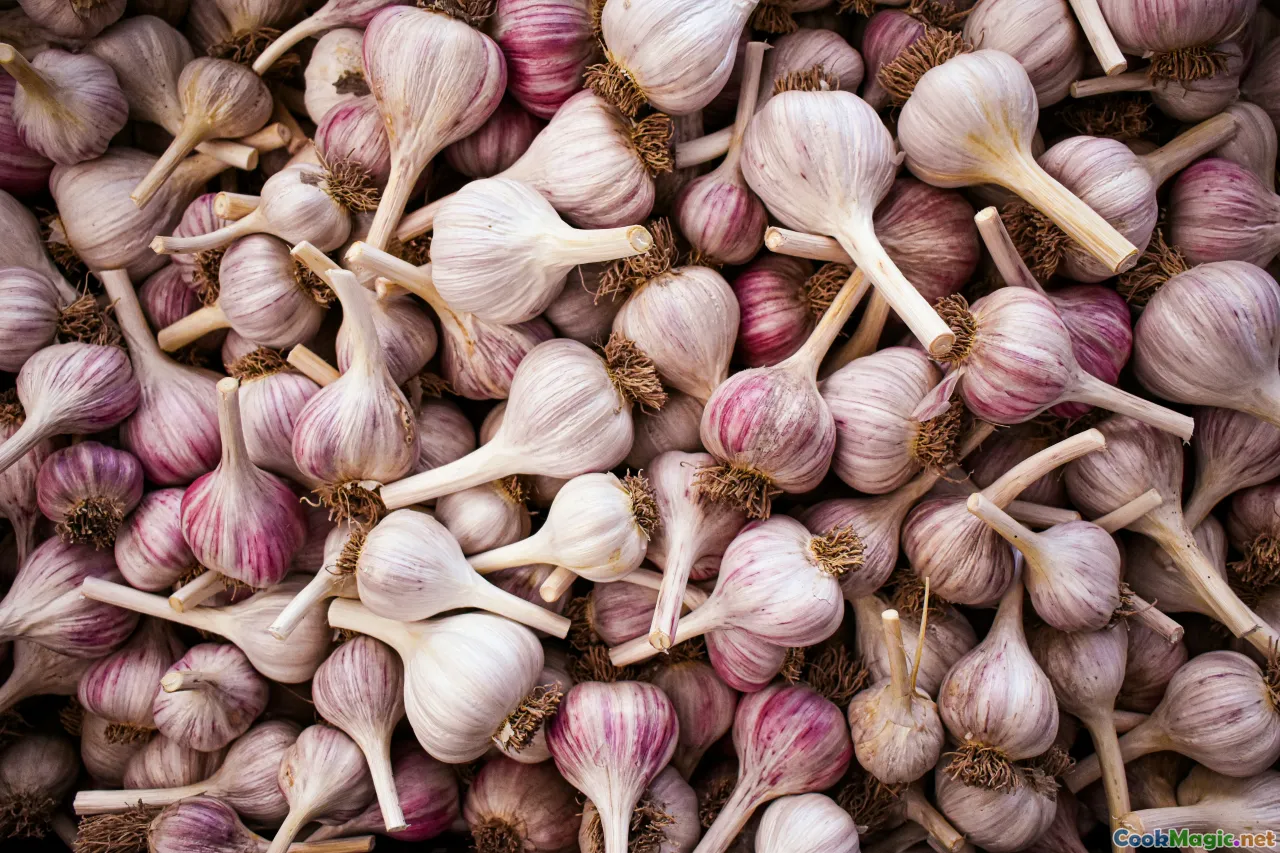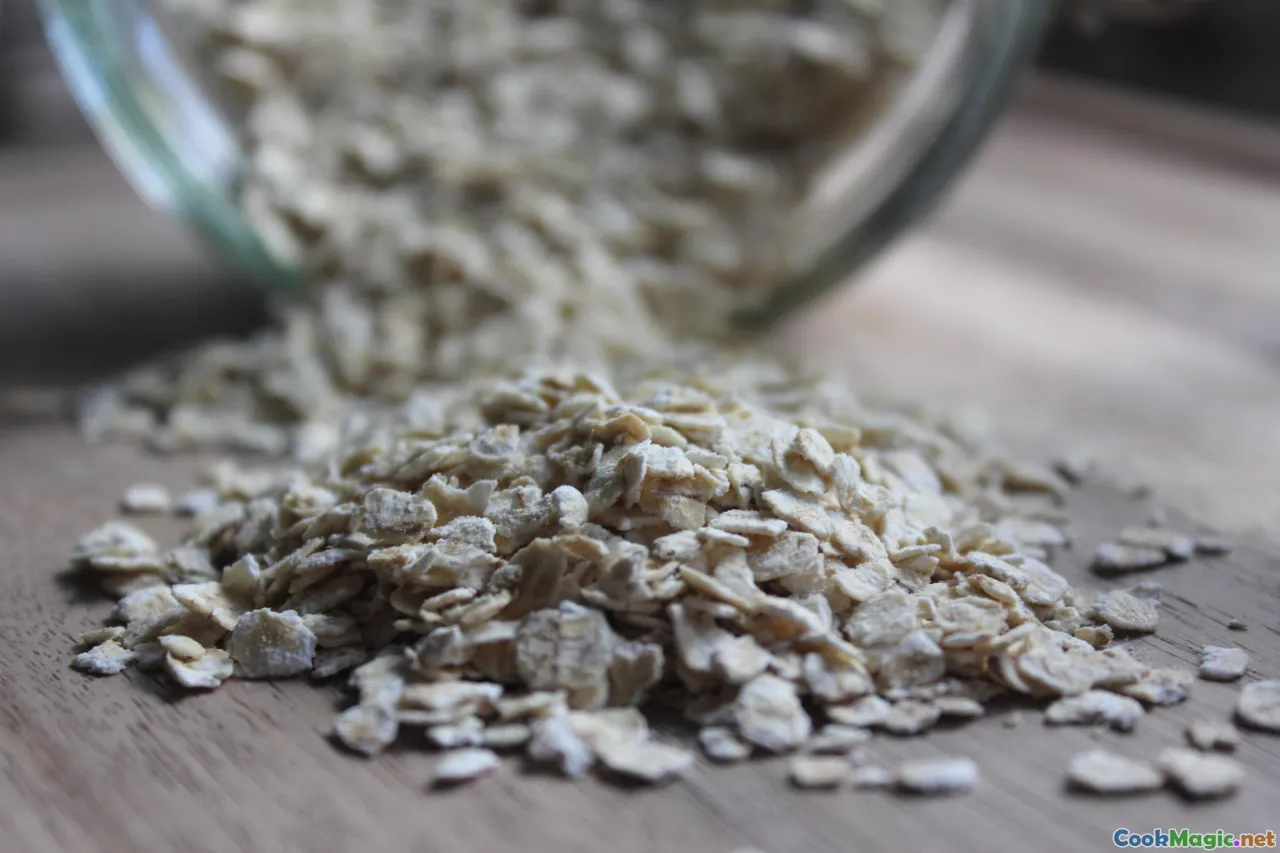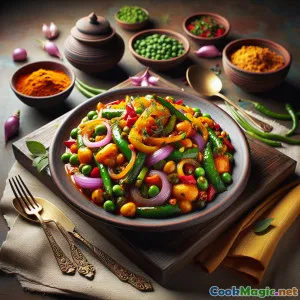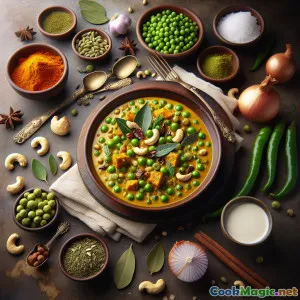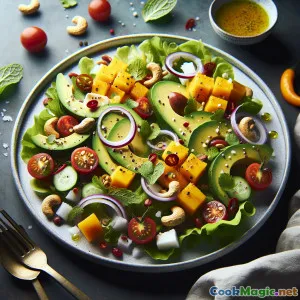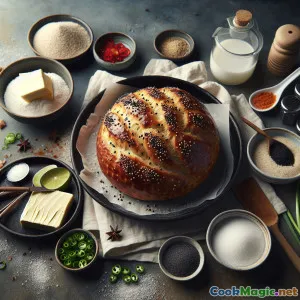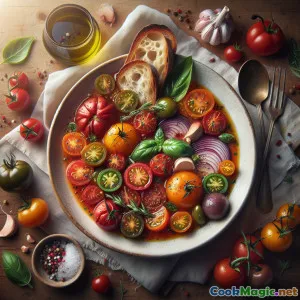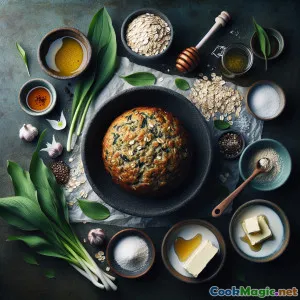
乡村野生大蒜与燕麦法尔斯:丰盛的英式烘焙
(Rustic Wild Garlic & Oat Farls: Hearty English Bake)
(0 评论)食材
-
150 grams 压制燕麦
(Use jumbo oats for more texture)
-
100 grams 普通面粉
(Can use half wholemeal for nuttier flavor)
-
2 teaspoons 泡打粉
(Ensure fresh for a good rise)
-
0.5 teaspoon 盐
-
180 ml 酪乳
(Can substitute half with Greek yogurt for tanginess)
-
30 grams 野生大蒜叶
(Finely chopped; substitute chives if out of season)
-
40 grams 黄油
(额外供食用)
-
1 tablespoon 蜂蜜
(Optional, adds slight sweetness)
-
0.25 teaspoon 黑胡椒
(新鲜敲碎,按口味)
(Use jumbo oats for more texture)
(Can use half wholemeal for nuttier flavor)
(Ensure fresh for a good rise)
(Can substitute half with Greek yogurt for tanginess)
(Finely chopped; substitute chives if out of season)
(额外供食用)
(Optional, adds slight sweetness)
(新鲜敲碎,按口味)
营养
- 份量: 4
- 每份大小: 1 wedge (about 80g)
- Calories: 260 kcal
- Carbohydrates: 34 g
- Protein: 6 g
- Fat: 11 g
- Fiber: 4 g
- Sugar: 2 g
- Sodium: 210 mg
- Cholesterol: 20 mg
- Calcium: 90 mg
- Iron: 1.8 mg
制作步骤
-
1 - Mix the Dry Ingredients:
In a large bowl, mix together the rolled oats, plain flour, baking powder, salt, and black pepper (if using).
-
2 - Add Butter:
Chop butter into small cubes. Rub into the dry mixture with fingertips until it forms breadcrumb-like pieces.
-
3 - Add Wet Ingredients:
Stir in chopped wild garlic, buttermilk, and honey (if using), mixing gently with a fork until just coming together.
-
4 - Shape the Dough:
Turn onto a lightly floured work surface and gently form a round, about 2 cm thick.
-
5 - Cut into Farls:
Cut dough circle into quarters (or farls) using a floured knife.
-
6 - Cook Farls in Pan:
Heat a nonstick (or lightly greased) skillet over medium heat and cook farls for 4–5 minutes per side until golden, and hollow when tapped.
-
7 - Serve Warm:
Transfer to a plate, brush with extra butter, and serve while warm, either plain or with sharp cheese.
In a large bowl, mix together the rolled oats, plain flour, baking powder, salt, and black pepper (if using).
Chop butter into small cubes. Rub into the dry mixture with fingertips until it forms breadcrumb-like pieces.
Stir in chopped wild garlic, buttermilk, and honey (if using), mixing gently with a fork until just coming together.
Turn onto a lightly floured work surface and gently form a round, about 2 cm thick.
Cut dough circle into quarters (or farls) using a floured knife.
Heat a nonstick (or lightly greased) skillet over medium heat and cook farls for 4–5 minutes per side until golden, and hollow when tapped.
Transfer to a plate, brush with extra butter, and serve while warm, either plain or with sharp cheese.
关于 乡村野生大蒜与燕麦法尔斯:丰盛的英式烘焙 :的更多信息
The Story and Culture of Wild Garlic and Oat Farls
Wild Garlic and Oat Farls take their inspiration from two of Britain's greatest passions: foraging and griddled bread. Farls—the word coming from the Gaelic for 'quarter'—are quick, rustic flatbreads or scones; lovingly cooked atop a hot griddle rather than baked in an oven. Often identified in their classic Ulster variant, farls were, and still remain, a staple of the British Isles, forming part of the cherished 'ulster fry' in Northern Ireland but also gracing tables throughout England, Wales, and Scotland.
What sets this particular recipe apart is the unique flavor profile gifted by fresh wild garlic, its delicate intensity heralding the arrival of spring on the English countryside calendar. Unlike common garlic, wild garlic (Allium ursinum), also known as 'ramsons,' offers a milder, grassier taste—akin to a blend of chives, garlic, and leeks. Patches of this plant appear like green carpets in the woodland. For locals, gathering these fragrant leaves is a seasonal ritual, best cherished before the plant flowers.
Meanwhile, oats have been integral to UK diets since the Iron Age, known for their dietary fiber, hearty sustenance, and nutty taste. Marrying rough, robust oats with the light freshness of wild garlic makes these farls especially pleasing—and nutritious. Oats bring slow-release energy, while wild garlic boosts a spring dish with natural vitamin C and ancient herbal lore.
Expert Tips & Serving Suggestions
- Foraging advice: Harvest wild garlic from clean, pesticide-free woodland away from pollution. Watch for similar species like lily of the valley, which is toxic. As a rule, wild garlic imparts an unmistakable garlicky aroma when crushed between your fingers.
- Customization: Can't find wild garlic? Substitute chives, ramps, or even a mild spring onion. Try a blend for complexity.
- Accompaniments: Pair farls with sharp cheese (try mature cheddar or blue vein), thick-cut bacon, smoked fish, or poached eggs. They also absorb honey, butter, or even a dollop of crème fraîche deliciously.
- Cooking vessel: Ideally, cook farls on a cast iron griddle, which sears them nicely and gives an authentic finish. In a pinch, a heavy-based skillet works perfectly as well.
- Meal timing: Farls shine at breakfast, but work for lunch sandwich breads or as a base for canapés. Split, toast lightly, and top however inspiration strikes.
Cultural Significance & Evolution
Breadmaking, especially griddle breads, historically transcended class and geography in the UK: they used little fuel, simple tools, and accessible ingredients. Farls were lifelines during times of scarcity, their ability to be whipped up at a moment’s notice rescuing many a hungry household, from Victorian eras up to the WWII home front, where frugality made simple breads critical.
Adding wild garlic, once dismissed as “poverty food,” makes a statement of reclaiming heritage flavors and wild bounty. These farls bring forth a taste of the woodlands—the tang of English hedgerows—onto the cosy kitchen table, allowing anyone, even in the heart of the city, to savor the unique perfumes and preserves of the countryside.
Final Thoughts
Making wild garlic and oat farls is more about enjoyment and adaptation than perfection; it’s a forgiving, flexible recipe perfect for beginner bakers or seasoned cooks short on time but rich with inspiration. Whether you snack on them straight off the pan, as part of a soulful English breakfast, or layered with sides at an outdoor picnic, these farls bring history, nutrition, and flavor together—a true taste of modern, reclaimed English rural tradition. The next time wild garlic wafts across your path, let it lead you straight home, blending earth and heritage into every golden bite.


